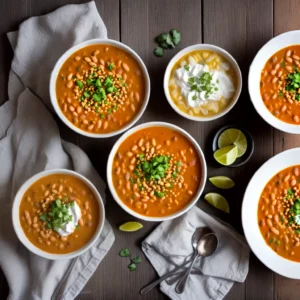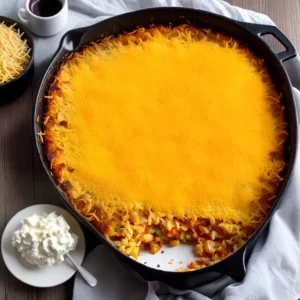Freezing corn is a simple and effective method to preserve the freshness and flavor of this summer favorite. Whether you have a surplus of fresh corn or want to enjoy its sweet and juicy kernels all year round, freezing is the answer. In this article, I will share valuable tips on how to freeze corn properly, ensuring that your frozen corn stays delicious and ready to use whenever you need it.
Key Takeaways:
- Freezing corn allows you to enjoy the taste of fresh corn even after the summer season ends.
- Choosing the best corn for freezing is crucial to ensure optimal taste and quality.
- Blanching corn before freezing helps preserve its color, flavor, and texture.
- You can freeze whole corn on the cob or opt for freezing corn kernels.
- Proper storage in airtight containers or freezer bags is essential to maintain the quality of frozen corn.
Why Freeze Corn?
Freezing corn is a popular method of preserving its freshness and flavor for future use. By freezing corn, you can ensure that you always have this summertime favorite on hand, even when it’s out of season. But why should you freeze corn in the first place? Let’s explore the benefits of preserving corn through freezing.
Prolong Shelf Life
One of the main reasons to freeze corn is to prolong its shelf life. Fresh corn has a relatively short lifespan, typically lasting only a few days before it starts to lose its sweetness and become less enjoyable to eat. By freezing corn, you can extend its freshness for months, allowing you to enjoy the taste of summer corn throughout the year.
Preserve Flavor and Nutrients
Freezing is a preservation method that helps lock in the flavor and nutrients of corn. When corn is properly frozen, the freezing process halts any degradation, preserving the taste and nutritional value of the kernels. This means that your frozen corn will retain much of the same flavor and nutritional benefits as fresh corn.
Convenient and Versatile
Freezing corn allows you to have a convenient and versatile ingredient readily available. Once frozen, corn can be used in a variety of recipes, such as soups, stews, casseroles, and side dishes. Frozen corn is a great addition to any pantry, providing you with options for creating delicious meals throughout the year.
Choosing the Best Corn for Freezing
When it comes to freezing corn, selecting the best ears is essential to ensure optimal taste and quality. Follow these tips to choose the perfect corn for freezing:
- Look for ears with bright green husks. This indicates that the corn is fresh and recently picked.
- Choose ears that feel heavy in your hand. Heaviness indicates plump and juicy kernels.
- Inspect the silks of the corn. They should be clean and white, without any signs of browning or dryness.
- Avoid ears with blemishes or spots. Opt for corn cobs that are free from mold, bruises, or discoloration.
By selecting ears of corn that meet these criteria, you’ll ensure the best results when it comes to flavor and texture after freezing.
| Criteria | Good Quality Corn | Poor Quality Corn |
|---|---|---|
| Husk Color | Bright green | Brown or withered |
| Weight | Feels heavy | Feels light |
| Silks | Clean and white | Browning or dry |
| Blemishes | No visible blemishes | Mold, bruises, or discoloration |
Table: Comparison of Corn Selection for Freezing
Key Takeaways:
- Choose bright green husks and ears that feel heavy for the best quality corn.
- Ensure the silks are clean and white without any signs of browning or dryness.
- Avoid corn cobs with blemishes, mold, bruises, or discoloration.
Freshness is crucial when it comes to freezing corn. By selecting the best ears, you’ll ensure that the frozen corn retains its flavor and texture, making it a delightful addition to your favorite recipes.
Blanching Corn for Freezing
One of the most effective methods for freezing corn is blanching. Blanching helps to preserve the color, flavor, and texture of the kernels, ensuring that your frozen corn stays delicious. The process involves boiling the corn briefly and then immediately placing it in an ice bath to stop the cooking process. This step helps maintain the quality of the corn when it is frozen.
To blanch corn for freezing, start by shucking the corn and removing the husks and silks. Fill a large pot with water and bring it to a rolling boil. Carefully place the corn cobs in the boiling water and allow them to cook for approximately 4 to 6 minutes. This blanching time may vary slightly depending on the size of the corn cobs.
After blanching, immediately transfer the corn to a bowl filled with ice water. Let the corn cool in the ice bath for the same amount of time it was blanched. This rapid cooling process halts the cooking and helps maintain the vibrant color and crispness of the corn.
“Blanching is a recommended method for freezing corn as it helps preserve the color, flavor, and texture of the kernels.”
Once the corn is completely cooled, drain it and pat it dry with a clean kitchen towel. Now, you can proceed to either freeze the whole corn on the cob or remove the kernels for freezing. Whatever method you choose, ensure that the corn is properly sealed and labeled before placing it in the freezer. By blanching your corn before freezing, you can enjoy the taste of summer even during the colder months.
Below is a summary of the blanching process for freezing corn:
Blanching Corn for Freezing: Step-by-Step Guide
- Shuck the corn and remove the husks and silks.
- Fill a large pot with water and bring it to a rolling boil.
- Place the corn cobs in the boiling water and cook for 4 to 6 minutes.
- Transfer the corn to an ice bath and let it cool for the same amount of time it was blanched.
- Drain the corn and pat it dry with a kitchen towel.
- Proceed to freeze the whole corn on the cob or remove the kernels for freezing.
- Seal and label the corn before placing it in the freezer.
| Pros of Blanching Corn for Freezing | Cons of Blanching Corn for Freezing |
|---|---|
| Preserves color, flavor, and texture | Requires an extra step in the freezing process |
| Helps maintain the quality of the corn | Blanching time may vary depending on corn size |
| Ensures corn stays delicious when frozen | Requires access to a large pot and ice bath |
Blanching corn before freezing is a worthwhile step to ensure that your frozen corn retains its freshness and taste. While it may require a bit of extra effort, the benefits of blanching far outweigh the minimal inconvenience. So go ahead and try blanching your corn before freezing to enjoy the best-quality corn all year round.
Freezing Whole Corn on the Cob
When it comes to freezing corn, preserving it on the cob is a popular choice. Freezing whole corn on the cob allows you to enjoy that satisfying crunch and sweetness when you’re ready to enjoy it later. Here’s a step-by-step guide on how to freeze corn on the cob:
- Start by blanching the corn. Blanching helps lock in the flavor and texture of the corn kernels. To blanch, bring a large pot of water to a boil and carefully add the corn cobs. Boil for 4-6 minutes, then remove the corn and immediately place it in an ice bath to cool for the same amount of time.
- Once the corn has cooled, pat it dry with a clean towel or paper towel. It’s essential to remove any excess moisture before freezing to prevent ice crystals from forming.
- Next, prepare your freezer-safe containers or bags. It’s recommended to use airtight containers or heavy-duty freezer bags to prevent freezer burn and maintain the freshness of the corn. Label the containers with the date so you can keep track of its freshness.
- Place the cooled corn cobs into the containers or bags, making sure to remove as much air as possible to minimize freezer burn. Seal tightly.
- Store the containers or bags in the freezer, and your corn on the cob will be ready to enjoy whenever you crave that taste of summer.
Remember, frozen corn on the cob can be stored in the freezer for up to 6 months, so make sure to use it before then for the best taste and quality.
With this simple method, you can savor the deliciousness of corn on the cob long after the summer season has ended. Whether you’re grilling, roasting, or steaming, your frozen corn on the cob will bring a burst of flavor and nostalgia to any meal.
Table: Pros and Cons of Freezing Whole Corn on the Cob
| Pros | Cons |
|---|---|
| Retains the crunch and sweetness of fresh corn | Requires more storage space compared to frozen corn kernels |
| Convenient for grilling, roasting, or steaming | May take longer to thaw and cook compared to frozen corn kernels |
| Less preparation needed when cooking | May not be as versatile as frozen corn kernels in certain recipes |
| Provides a visually appealing presentation | Requires careful packaging to prevent freezer burn |
As with any freezing method, freezing whole corn on the cob has its pros and cons. Consider your preferences, cooking habits, and available freezer space when deciding whether to preserve corn on the cob or opt for freezing corn kernels instead. Both methods offer the convenience of enjoying the taste of summer year-round.
Freezing Corn Kernels
If you prefer to freeze corn kernels instead of whole cobs, you can follow the same blanching process as mentioned earlier. After blanching and cooling the corn cobs, cut the kernels off the cob and spread them out in a single layer on a baking sheet. Freeze the kernels until solid, then transfer them to airtight containers or freezer bags. This method allows you to easily portion out the corn kernels for use in recipes.
When freezing corn kernels, it’s important to spread them out in a single layer on a baking sheet before transferring them to containers or bags. This helps prevent the kernels from sticking together and allows for easier portioning when you’re ready to use them. Freezing the kernels individually also helps maintain their texture and prevents them from clumping up.
Once the corn kernels are frozen solid, transfer them to airtight containers or freezer bags. Be sure to remove as much air as possible from the packaging to prevent freezer burn. Label the containers or bags with the date of freezing to keep track of their freshness. Frozen corn kernels can be stored in the freezer for up to 6 months, ensuring that you always have a supply on hand for your favorite recipes.
Table: Freezing Corn Kernels
| Step | Description |
|---|---|
| 1 | Blanch and cool the corn cobs. |
| 2 | Cut the corn kernels off the cob. |
| 3 | Spread the kernels out in a single layer on a baking sheet. |
| 4 | Freeze the kernels until solid. |
| 5 | Transfer the frozen kernels to airtight containers or freezer bags. |
| 6 | Remove as much air as possible from the packaging to prevent freezer burn. |
| 7 | Label the containers or bags with the date of freezing. |
| 8 | Store in the freezer for up to 6 months. |
Corn Freezing Tips and Vacuum-Sealing Vegetables
When it comes to freezing corn, there are a few tips and tricks that can help you preserve its freshness and flavor. Additionally, using a vacuum sealer can provide an extra layer of protection to ensure that your frozen corn stays in its best condition. Here are some corn freezing tips and vacuum-sealing techniques to help you make the most of your corn harvest:
Blanching Corn Before Freezing
Blanching is an essential step in freezing corn as it helps to preserve its color, texture, and nutrients. To blanch corn, simply boil the cobs in a large pot of water for a few minutes, then transfer them to an ice bath to stop the cooking process. After blanching, pat the corn dry and pack it into freezer-safe containers or bags.
Using a Vacuum Sealer for Corn
Vacuum-sealing is a great way to extend the shelf life of your frozen corn. By removing the air from the packaging, you can minimize the chances of freezer burn and maintain the quality of the corn. After blanching and drying the corn, transfer it to vacuum-seal bags or containers, and follow the manufacturer’s instructions to remove the air. Vacuum-sealed corn can be stored in the freezer for an extended period without compromising the taste or texture.
Labeling and Storing Frozen Corn
Proper labeling and storage are crucial for maintaining the quality of your frozen corn. Label each container or bag with the date of freezing to keep track of its freshness. Store the corn in the coldest part of your freezer, ensuring it is tightly sealed to prevent any air or moisture from entering. By following these corn storage tips, you can enjoy the taste of summer corn all year round.
By following these corn freezing tips and vacuum-sealing techniques, you can ensure that your frozen corn stays fresh and delicious. Whether you choose to blanch the corn or vacuum-seal it, these methods will help preserve the flavor, texture, and nutrients of the corn. Enjoy the taste of sweet, juicy corn even when it’s not in season and savor the flavors of summer all year long.
Freezing Corn Without Blanching: A Step-by-Step Guide
When it comes to preserving the delicious taste of fresh corn, blanching is often recommended. However, if you’re looking for a quicker and easier method, you can freeze corn without blanching. Here’s a step-by-step guide to freezing corn at home:
Step 1: Start by shucking the corn, removing the husks and silks. Make sure to discard any damaged or blemished ears.
Step 2: Using a sharp knife, cut the kernels off the cob. Place the kernels in a single layer on a baking sheet.
Step 3: Transfer the baking sheet to the freezer and let the corn kernels freeze until solid. This typically takes about 1 to 2 hours.
Step 4: Once the corn is frozen, transfer the kernels to airtight containers or freezer bags. Make sure to remove as much air as possible to prevent freezer burn. Label the containers with the date for reference.
By following these simple steps, you can easily freeze corn without blanching, saving you time and effort in the kitchen. Keep in mind that the texture and flavor may not be as optimal as when using the blanching method, but it’s a convenient option for those who prefer a faster freezing process.
Benefits of Freezing Corn Without Blanching
Freezing corn without blanching offers a few advantages. Firstly, it saves you the extra step of blanching, making the freezing process more convenient and time-saving. This is especially beneficial for busy individuals who want to preserve their fresh corn quickly and efficiently.
Additionally, freezing corn without blanching can help retain the natural crunchiness of the kernels. Blanching can sometimes soften the texture of the corn, so by skipping this step, you can enjoy a firmer bite when using the frozen corn in your favorite recipes.
However, it’s important to note that skipping blanching may slightly reduce the overall shelf life and quality of the frozen corn compared to blanched corn. Therefore, it’s recommended to consume the frozen corn within 3 to 4 months for the best taste and texture.
Tips for Freezing Corn at Home
- Choose fresh and high-quality corn for freezing.
- Consider using a vacuum sealer for maximum freshness and longer storage life.
- Portion out the corn into smaller containers or bags for easy usage.
- Label the containers with the date to keep track of the freshness.
With these tips in mind, you can confidently freeze corn at home, whether you choose to blanch or skip the blanching step. Enjoy the sweet taste of summer all year round by having a stash of frozen corn at hand for your favorite recipes!
Storing Frozen Corn
Proper storage is essential to maintain the quality and flavor of frozen corn. After freezing the corn cobs or kernels, transfer them to airtight containers or freezer bags. Remove as much air as possible from the packaging to prevent freezer burn. Label the containers with the date to keep track of their freshness. Store the frozen corn in the freezer, where it can remain fresh for up to 6 months.
Storing fresh corn is also important before freezing it. If you plan to freeze fresh corn, it’s best to do so as soon as possible after harvesting or purchasing it. Keep the corn refrigerated until you’re ready to freeze it to maintain its freshness and quality.
When storing frozen corn, it’s crucial to avoid any temperature fluctuations that can affect its quality. Keep the freezer at a consistently low temperature to prevent the formation of ice crystals and maintain the integrity of the corn. Always store the corn away from the freezer door, as it is the area most susceptible to temperature fluctuations.
| Storage Tips for Frozen Corn |
|---|
| Transfer frozen corn to airtight containers or freezer bags |
| Remove as much air as possible to prevent freezer burn |
| Label containers with the date for easy reference |
| Keep the freezer at a consistently low temperature |
| Store corn away from the freezer door |
By following these corn storage tips, you can ensure that your frozen corn remains fresh and delicious, ready to use whenever you need it. Whether you’re using it in soups, stews, salads, or other recipes, properly stored frozen corn will retain its flavor and texture, allowing you to enjoy the taste of summer all year round.

Thawing and Using Frozen Corn
When you’re ready to use your frozen corn, there are a couple of methods for thawing. The easiest way is to transfer the corn to the refrigerator and let it thaw overnight. This allows for a slow, gentle thawing process that preserves the texture and flavor of the corn kernels. If you’re short on time, you can also use a stovetop method to quickly thaw the frozen corn.
To thaw frozen corn on the stovetop, simply place the desired amount of frozen kernels in a saucepan. Add a few tablespoons of water to the pan to create steam. Heat the pan over medium-high heat, stirring occasionally, until the corn kernels break apart and are fully heated through. This method is ideal when you need to use the corn immediately and don’t have time for overnight thawing.
Once your frozen corn is thawed, you can incorporate it into a variety of dishes. Thawed corn works well in cooked dishes where it will be reheated, such as soups, stews, casseroles, and side dishes. It can also be used in recipes that call for fresh corn, such as salads or salsas. Frozen corn adds a burst of sweet, summer flavor to any dish, making it a versatile ingredient to have on hand.
Tips for Using Thawed Corn
Here are some tips to make the most of your thawed corn:
- Drain any excess liquid before adding thawed corn to your recipe, especially if you thawed it using the stovetop method.
- If you prefer a crispier texture, you can quickly sauté the thawed corn in a skillet with a little butter or oil.
- Thawed corn can be mixed into cold salads or used as a topping for tacos, nachos, or baked potatoes.
- Remember to adjust the seasoning in your recipe if you are using previously seasoned frozen corn.
Using frozen corn allows you to enjoy the taste of summer all year round. Whether you choose to thaw it overnight in the refrigerator or quickly on the stovetop, having frozen corn on hand adds convenience to your cooking. From hearty stews to refreshing salads, thawed corn can be used in a wide variety of dishes to bring a burst of sweet, vibrant flavor to your meals.
| Thawing Method | Advantages | Disadvantages |
|---|---|---|
| Refrigerator Thawing | Slow and gentle thawing preserves texture and flavor. | Takes longer compared to stovetop thawing. |
| Stovetop Thawing | Quick thawing method when time is limited. | May result in slightly softer texture compared to refrigerator thawing. |
Recipes to Try with Frozen Corn
If you’re looking for delicious ways to use your frozen corn, you’re in luck! Whether you’re making soups, stews, salads, or side dishes, frozen corn can add a burst of sweetness and texture to your recipes. Here are a few ideas to get you started:
Soup and Stew Recipes
Freezing corn for soups and stews is a great way to enhance their flavors and make them more hearty. Add thawed corn to your favorite chicken noodle soup, vegetable soup, or chili recipe for a pop of sweetness and crunch. The corn kernels will add a burst of flavor to every spoonful, making your homemade soups even more satisfying.
Salad Recipes
For refreshing and vibrant salads, frozen corn can be a delightful addition. Thawed corn kernels bring a burst of color and sweetness to salads made with mixed greens, tomatoes, cucumbers, and avocados. You can also mix them into pasta salads or grain bowls for added texture and flavor.
Side Dish Recipes
Frozen corn makes for excellent side dishes that pair well with a variety of main courses. Consider making a corn and black bean salsa, a corn and zucchini medley, or a creamy corn casserole. These dishes are not only delicious but also easy to prepare, making them perfect for busy weeknight dinners or gatherings with friends and family.
Experiment with these recipes and let your culinary creativity shine. With frozen corn as a versatile ingredient, the possibilities are endless. So, stock up on frozen corn and discover how it can elevate your favorite dishes throughout the year.
| Recipe | Description |
|---|---|
| Chicken Corn Chowder | A creamy and comforting soup packed with tender chicken, potatoes, and sweet corn. |
| Corn and Avocado Salad | A refreshing salad with bright flavors, featuring corn, avocado, cherry tomatoes, and a tangy dressing. |
| Cheesy Corn Casserole | A rich and indulgent side dish made with corn, cheese, and a buttery breadcrumb topping. |
Tips for Freezing and Using Corn
When it comes to freezing corn, there are a few hacks and tips that can make the process easier and more successful. Whether you’re freezing corn on the cob or corn kernels, these tips will help you preserve the flavor and texture of this delicious summer vegetable.
Freezing Corn on the Cob
If you’re freezing corn on the cob, it’s important to remove the husks and silk before freezing. This allows the corn to freeze more evenly and prevents it from drying out. Once the corn is shucked, blanch it before freezing to help maintain its flavor and color. Then, wrap each cob individually in plastic wrap or aluminum foil to protect it from freezer burn. Finally, place the wrapped cobs in a freezer bag or airtight container and label it with the date.
Freezing Corn Kernels
If you prefer to freeze corn kernels, start by blanching the corn on the cob as mentioned earlier. After blanching, allow the corn to cool and dry completely. Then, cut the kernels off the cob and spread them out in a single layer on a baking sheet. Place the baking sheet in the freezer until the kernels are frozen solid. Once frozen, transfer the kernels to airtight containers or freezer bags, removing as much air as possible. Don’t forget to label the containers with the date for easy reference.
Preserving Corn on the Cob
If you want to enjoy corn on the cob straight from the freezer, there’s a simple preservation method you can try. Start by blanching the corn on the cob as mentioned earlier. Once blanched, allow the corn to cool and dry completely. Then, wrap each cob individually in plastic wrap or aluminum foil and place them in a freezer bag or airtight container. This method allows you to preserve the corn on the cob for longer periods, so you can enjoy that fresh, sweet taste even during the off-season.

The Benefits of Freezing Corn
Freezing corn provides numerous benefits, making it a practical and economical choice for preserving this summer staple. Whether you’re a food enthusiast or simply looking to extend the availability of fresh produce, freezing corn is a convenient option that offers several advantages.
First and foremost, freezing corn allows you to enjoy the sweet, juicy taste of fresh corn even when it’s out of season. By freezing corn at its peak freshness, you can lock in the flavors and textures that make it a favorite ingredient in various dishes. This means that you can savor summer’s sweetness all year round.
Another benefit of freezing corn is its versatility. Frozen corn can be used in a wide range of recipes, from soups and stews to salads and side dishes. It adds a burst of flavor and a satisfying crunch to any meal. Plus, with frozen corn on hand, you can easily whip up a quick and nutritious dish at any time.
The convenience factor is also a major advantage of freezing corn. With frozen corn readily available in your freezer, you can save time and effort in the kitchen. No need to shuck, clean, or cut fresh corn every time you want to use it. Simply grab a bag of frozen corn, thaw it, and you’re ready to go.
Additionally, freezing corn preserves its nutritional value. Fresh corn is packed with vitamins, minerals, and antioxidants that offer numerous health benefits. By freezing corn, you can retain these nutrients, ensuring that you continue to reap their advantages even when corn is not in season. This makes frozen corn a convenient and nutritious addition to your diet.
Overall, the benefits of freezing corn are undeniable. From preserving freshness and flavor to offering convenience and versatility, freezing corn is a smart choice for any home cook. So, take advantage of the abundance of summer corn, freeze it, and enjoy the taste of summer all year long.
Conclusion
Freezing summer corn is a fantastic way to preserve the flavors and essence of this delightful seasonal vegetable. Whether you choose to freeze whole cobs or kernels, the process is simple and the rewards are plentiful. By following the proper techniques and storage methods, you can enjoy the taste of summer year-round.
Preserving summer corn through freezing not only allows you to savor its sweetness whenever you please but also helps you save time in the kitchen. With frozen corn at your disposal, you’ll have a versatile ingredient ready to enhance a variety of dishes, from soups and stews to salads and side dishes.
So, don’t let the deliciousness of fresh corn go to waste. Take advantage of the abundance of summer corn and freeze it to enjoy later. Whether you’re blanching or opting for a blanch-free method, freezing summer corn ensures that the flavors, freshness, and nutrients are preserved, letting you relish the taste of summer all year long.
FAQ
Is it necessary to blanch corn before freezing it?
Blanching is recommended for the best results when freezing corn. It helps preserve the color, flavor, and texture of the kernels. However, you can also freeze corn without blanching, but the texture and flavor may not be as optimal.
How long can frozen corn be stored?
Frozen corn can be stored for up to 6 months in the freezer. Properly label and date the containers to keep track of its freshness.
How should frozen corn be thawed?
The easiest way to thaw frozen corn is to transfer it to the refrigerator and let it thaw overnight. If you’re short on time, you can also place the frozen corn in a saucepan with a few tablespoons of water and heat it over medium-high heat until the kernels break apart.
Can frozen corn be used in recipes?
Yes, frozen corn can be used in a variety of recipes. It works well in soups, stews, casseroles, salads, side dishes, and other dishes where corn is called for. Get creative and experiment with different recipes!
What is the benefit of freezing corn?
Freezing corn allows you to enjoy the sweet and juicy taste of fresh corn even during the off-season. It also helps you take advantage of seasonal bargains and stock up on corn when it’s at its peak. Freezing corn can save you time in the kitchen, as the corn is already prepped and ready to use.
Can corn be frozen without blanching?
Yes, you can freeze corn without blanching. Simply shuck the corn, remove the husks and silks, cut the kernels off the cob, and freeze them. However, the texture and flavor may not be as optimal as when using the blanching method.
How can I prevent freezer burn on frozen corn?
Proper storage is crucial to prevent freezer burn. After freezing the corn, transfer it to airtight containers or freezer bags, and remove as much air as possible. This will help prevent the formation of ice crystals and maintain the quality of the corn.
Can I vacuum seal corn for freezing?
Yes, using a vacuum sealer can provide an extra layer of protection when freezing corn. After blanching and drying the corn, transfer the cobs or kernels to vacuum-seal bags or containers. Follow the manufacturer’s instructions for sealing the bags, ensuring that as much air as possible is removed.
Can I freeze corn on the cob?
Yes, you can freeze whole corn on the cob. Start by blanching the corn, allowing it to cool and dry completely. Then, place the corn cobs in airtight containers or freezer bags, remove as much air as possible, and label with the date. This method is ideal if you prefer to enjoy corn on the cob later.
Can I portion out corn kernels before freezing?
Yes, you can portion out corn kernels before freezing them. After blanching and cooling the corn cobs, cut the kernels off and spread them out in a single layer on a baking sheet. Freeze the kernels until solid, then transfer them to airtight containers or freezer bags. This allows you to easily portion out the corn kernels for use in recipes.
How should frozen corn be stored?
After freezing corn, transfer it to airtight containers or freezer bags. Remove as much air as possible from the packaging to prevent freezer burn. Label the containers with the date and store in the freezer for up to 6 months.
Source Links
- https://www.thekitchn.com/how-to-freeze-corn-234735
- https://www.southernliving.com/food/veggies/corn/how-to-freeze-corn-on-cob
- https://www.eatingwell.com/article/8055960/how-to-freeze-corn/
Related Recipes:
 How to Tell if Corn on the Cob is Bad: Key Indicators
How to Tell if Corn on the Cob is Bad: Key Indicators
 How to Freeze Green Beans for Best Quality
How to Freeze Green Beans for Best Quality
 How to Freeze Bananas? (Perfect Step-By-Step Guide)
How to Freeze Bananas? (Perfect Step-By-Step Guide)
 How to Freeze Carrots: A Step-by-Step Guide
How to Freeze Carrots: A Step-by-Step Guide
 How to Freeze Spinach? (Perfect Step-By-Step Guide)
How to Freeze Spinach? (Perfect Step-By-Step Guide)
 How to Blanch Tomatoes? (Perfect Step-By-Step Guide)
How to Blanch Tomatoes? (Perfect Step-By-Step Guide)
 Can You Freeze Garlic? Here’s How to Do It Right.
Can You Freeze Garlic? Here’s How to Do It Right.
 How to Freeze Cauliflower for Later Use
How to Freeze Cauliflower for Later Use








